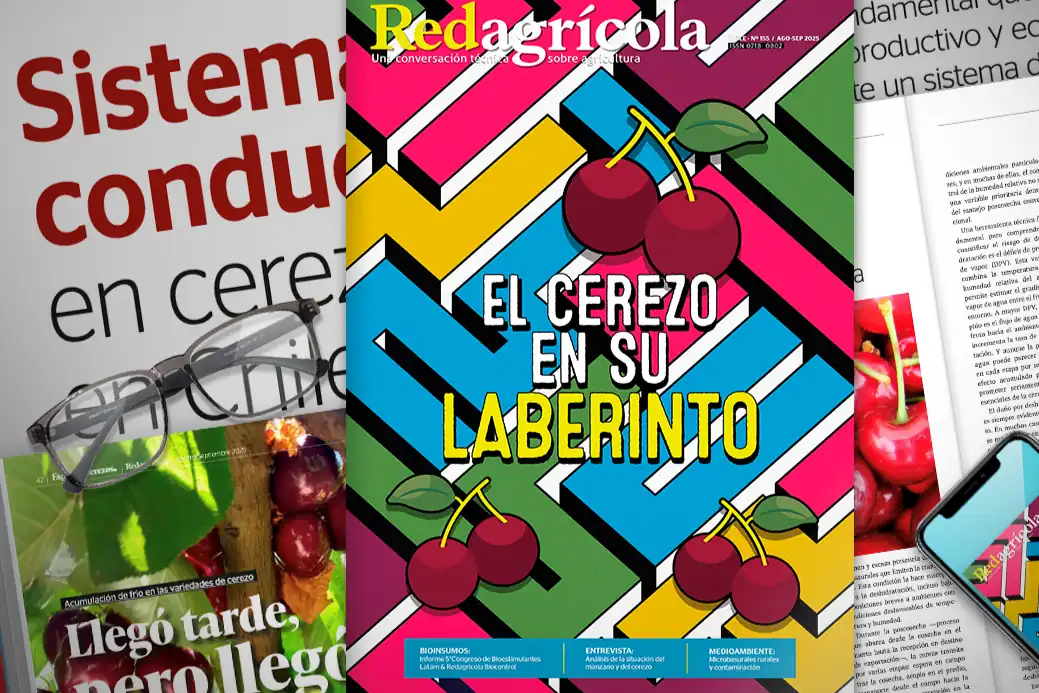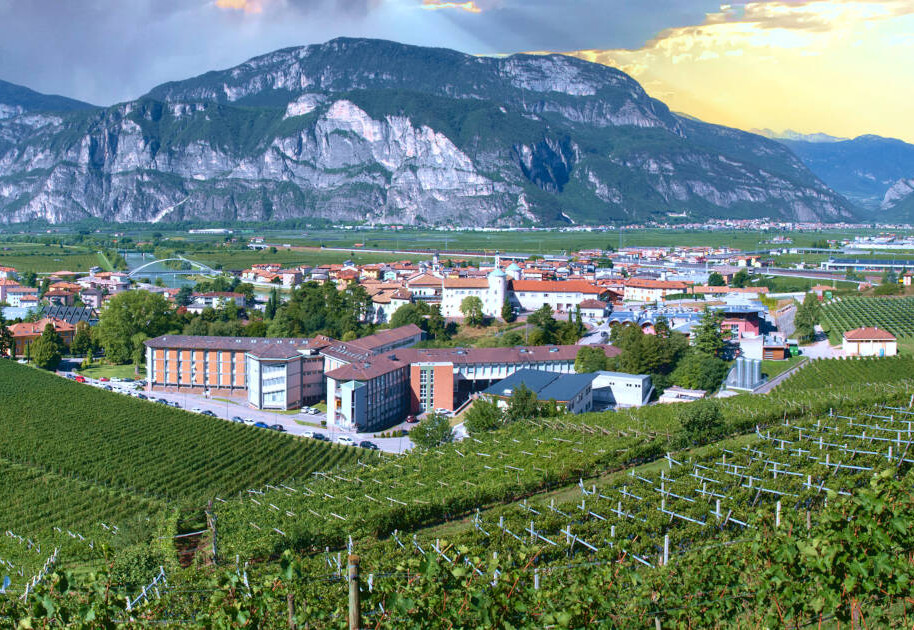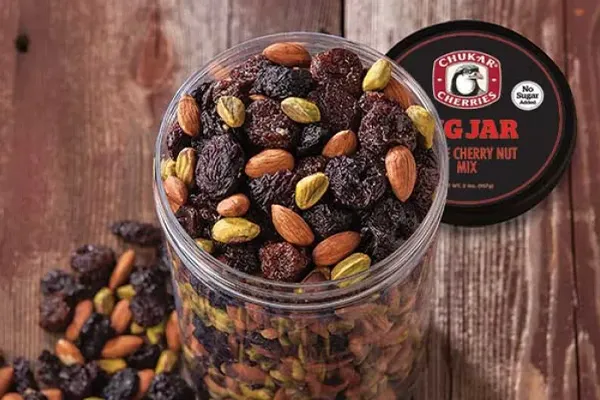A comprehensive analysis of the present and future of the cherry sector in Chile: management, postharvest, innovation, and the essential commitment to quality.
The 155th issue of Redagrícola Chile has arrived, and this time it shines the spotlight on an absolute protagonist of Chilean agricultural exports: the cherry. After a complex season, the magazine offers an in-depth overview of the challenges, technical solutions, and strategic choices needed to keep international interest high in the “queen” of Chilean fruit growing.

A sector at a crossroads
Cherry exports are one of the pillars of Chilean agriculture, right after copper and salmon. However, the sector is now facing crucial questions about its ability to grow in the future. According to many experts, we may be approaching a saturation point.
Among the leading voices in this issue is Antonio Walker, president of SNA and a direct producer. After a disappointing season, Walker emphasizes that the future of the sector depends solely on a return to quality: “If we ship firm fruit, with green stems, good organoleptic profile and crunchiness, we will achieve good results,” he says, also in his role as CEO of Wapri, an agricultural company dedicated to both cherry and apple production.
Walker also recalls a key fact: China still consumed 130 million boxes of cherries, showing that demand is not lacking. But it is essential – he insists – that Chilean producers commit rigorously to maintaining high-quality standards.
Production strategies and technical insights
Issue 155 also offers a series of highly relevant technical contents:
Economic management and sustainability: Agronomist and professor Óscar Carrasco outlines strategies to optimize costs and increase profitability, focusing on agronomic practices that truly impact operating margins.
Cherry training systems: Professors Marlene Ayala and Andrés Valenzuela from the Pontificia Universidad Católica de Chile compare different training systems adopted in the country, analyzing their advantages and limitations.
Vegetative balance and root development: Expert Luis Valenzuela highlights the need to balance vegetative growth and production to obtain fruits with optimal size, firmness, flavor, and extended shelf life.
Focus 2025-2026: forecasts and innovations
The magazine delves into forecasts for the next season with an analysis by Luis Espíndola on winter chill accumulation: although low temperatures arrived late, data indicates that the plant’s physiological requirements may be met.
Among the scientific contributions, the study led by researchers José Ignacio Covarrubias, Fernanda Vásquez, Francisco Quintanilla, and Thomas Fichet of the University of Chile stands out, highlighting the importance of early calcium application to the soil, essential for increasing fruit firmness.
Also particularly useful is the in-depth article by the CEPOC team (Centro de Estudios de Poscosecha) on extending the commercial life of the Regina variety, now the third most cultivated in Chile.
Bioinputs and sustainability
The issue also takes a look at green innovation with a detailed report on the 5th Bioestimulantes y Biocontrol Congress, held in August in Chile. The event highlighted the growing importance of this sector in Latin America and its potential in sustainable plant health management.
Finally, the issue features a study by Rodrigo Ortega Blu and María Mercedez Martínez from the Universidad Técnica Federico Santa María, on the deterioration of agricultural soils caused by illegal micro-dumps in the country’s rural areas.
A look into the future
At a crucial moment for the Chilean cherry industry, the new edition of Redagrícola presents itself as a valuable guide. The keyword is: quality, to be pursued at every stage of the chain, from the field to postharvest logistics. To continue leading international markets, Chile will need to invest in expertise, innovation, and sustainability.
Source: redagricola.com
Image source: Redagricola
Cherry Times - All rights reserved













